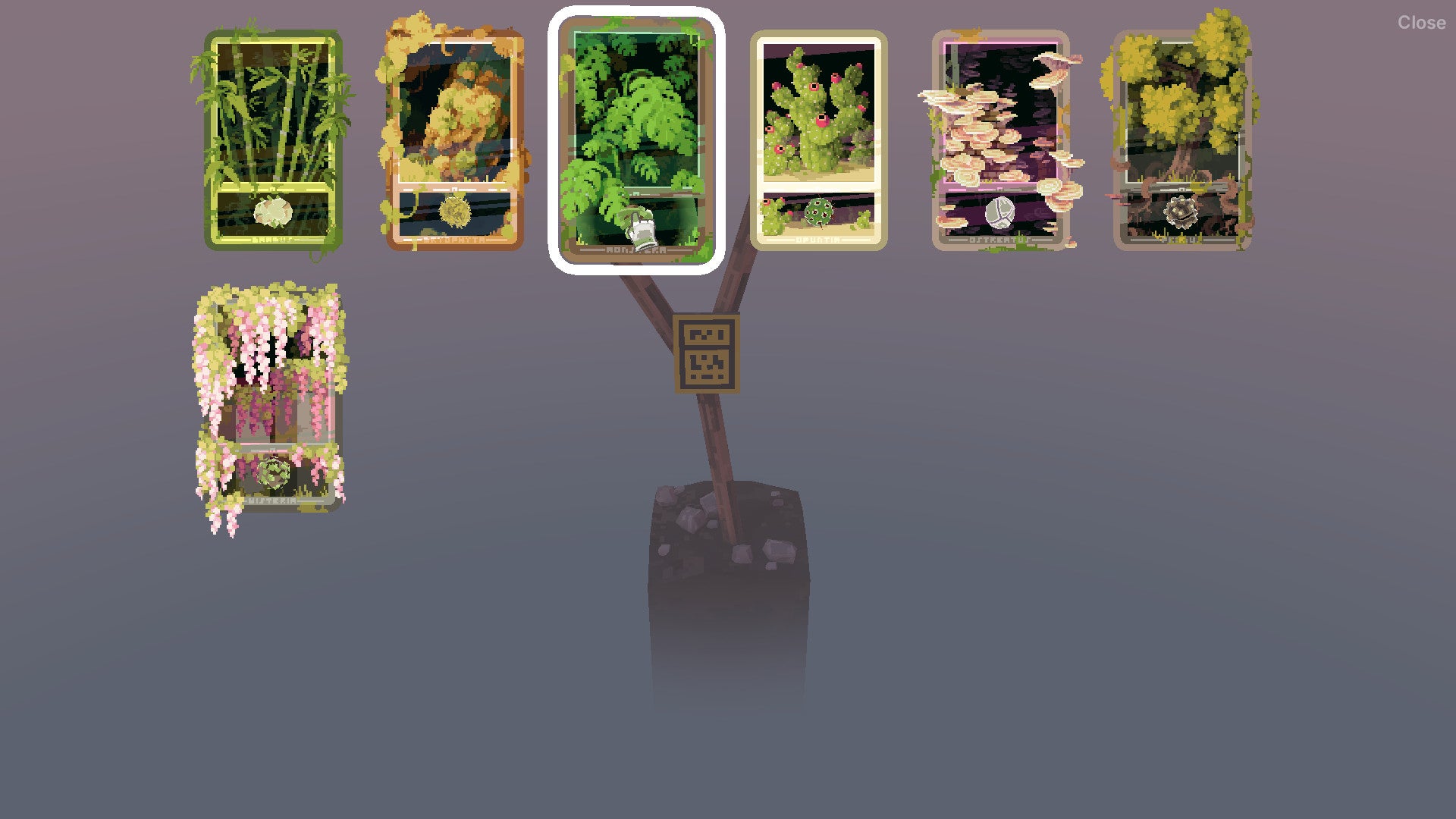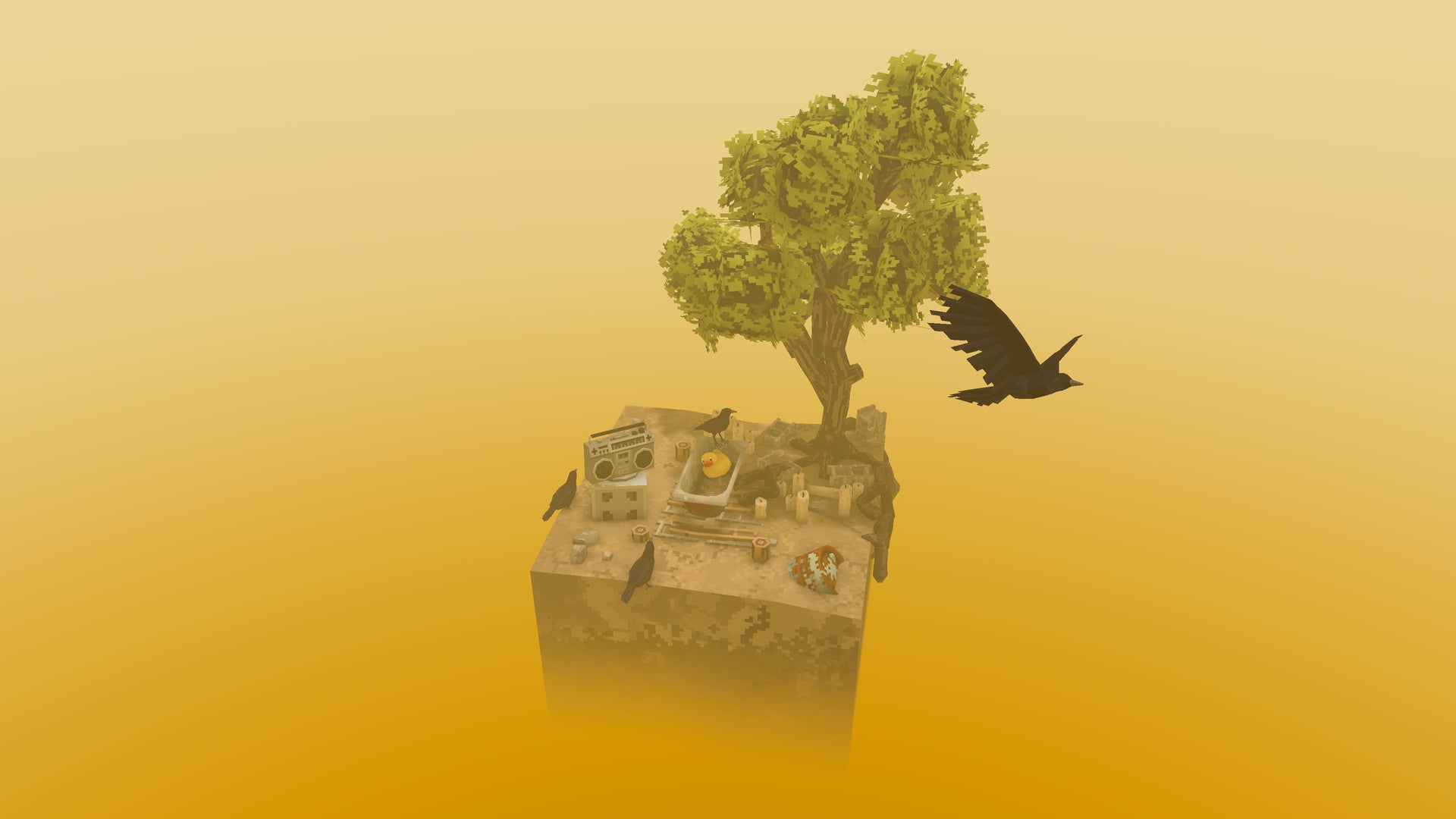
[ad_1]
The post-apocalypse is often accompanied by violence, grit and gore when it comes to video games. So many titles use the inevitable wasteland to emotionally torture their characters or as a playground to squash some monsters – or both. Cloud Gardens abandons all the blood and tears. Refreshingly, the game doesn’t rely on any drama or conflict. Instead, Cloud Gardens is solely focused on the idea of revitalisation and nature taking back spaces… after we’re gone.
Cloud Gardens’ series of puzzle-box dioramas perfectly convey the idea of rejuvenation. Each scene presents a small corner of the wasteland, devoid of human life: an abandoned car park, an empty playground, a building’s rooftop. From there, it’s up to you to do some post-apocalyptic decorating, growing seeds and placing debris. It’s a suprisingly meditative game coming from the same developer that made the often intense micro-strategy of Kingdom Two Crowns.
You have an expanding arsenal of seeds at your disposal: cacti, bamboo, vines, trees and so on. Once planted, the seeds will only grow once you place remnants of the old world around them such as car carcases, old toys and broken benches. From there, greenery will sprout from the concrete and grow more seeds for you to plant. When your garden has conquered enough of the terrain, the level is finished and it’s time for you to move on to the next.
Each puzzle is a zen experience due to the game’s clean lo-fi art style, soothing ambient music and laidback gardening. But this doesn’t mean the puzzles don’t need some brains. Methodical placement is required to fit all the seeds and debris in a single, cramped box, especially since the placeable waste can cut off and destroy your gardens.
“The process is just as satisfying as the end result. Each diorama becomes a hopeful, tranquil scene that begs you to take a screenshot.”
The process is just as satisfying as the end result. Each diorama becomes a hopeful, tranquil scene that begs you to take a screenshot. There’s vegetation growing out of cracked concrete, through chain link fences and wrapping around massive hunks of metal. By the end, nature engulfs the scraps left behind. It never really feels like a contentious relationship. Sure, dropping a big car on your garden will destroy everything and send the birds flying away, but this isn’t a game of tug of war. The waste you carefully place fertilises nature and this symbiotic relationship is what brings meaning back to the wasteland. The relics of the past world have been left behind without a purpose but the game’s presentation gives them a new life as part of the natural world. After completing a puzzle, sometimes a slanted lampost will flicker on, illuminating a scene, working again as if magically healed by the blossoming environment.
Most levels here are completely empty at first. There are no NPCs or journals to explain the history of the empty square you’re staring at. Once you’re finished with a puzzle, they tell a wordless, melancholy story. I kept thinking of my job in the game as a production designer, decorating sets, as I carefully placed items of garbage. I thought it was slightly funny and creepy to have a teddy bear, sitting on a stool, staring at a broken TV. I found it a little sad placing camping chairs and beer bottles around a barrel, imagining a group of friends who once drank around a fire. I pictured the chaotic rush of the pre-apocalypse as I dropped cars on a highway, stacking them on top of each other or in the middle of the train tracks. No matter how grim the scene I created was, the overgrown greenery transforms it into a tranquil space.

None of these sights are as snappable and shareable as some of the crazy creations from Minecraft, for example. But this is just because of the game’s lack of grandiose sights. Cloud Gardens is a small scale game and shines in the little details that only you would notice as the sole gardener/production designer of the end of the world.
Creative Mode enhances the best part of Cloud Gardens. There are a wild number of decorations to choose from by the time you’ve unlocked every item. The option to place ground blocks and buildings also adds a nice level of verticality to custom dioramas. If you loved the quiet storytelling that comes from decorating scenes, Creative Mode is for you.
Cloud Gardens is sadly not a flawless meditative experience. With nearly 100 dioramas to run through, monotony kicks in easily, and it isn’t a side-effect of playing too many puzzles, too quickly. A lot of the game’s levels have an excessive number of props to place in dioramas that are too small to comfortably fit them. Many times, this led to me creating a landfill for rubbish in the corner of a level.

Some overly small dioramas aren’t the only time Cloud Gardens grapples with tedium. The landfill routine becomes tempting even in more spacious levels, as the game tends to reuse props too often. When the diorama isn’t exciting and I’ve been handed the same chairs and garden gnomes for the tenth time, of course I’m going to stack them thoughtlessly.
It’s a shame Cloud Gardens felt the need to stretch its playtime with reused ideas, because when Cloud Gardens is at its best, it’s a delight. It’s a competent, unique puzzle game and a contemplative, relaxing dreamscape, all rolled into one small package. If you ever have anxiety about the future state of the Earth, check out Cloud Gardens. Watching nature overrun a factory is more cathartic than you might think.
[ad_2]





